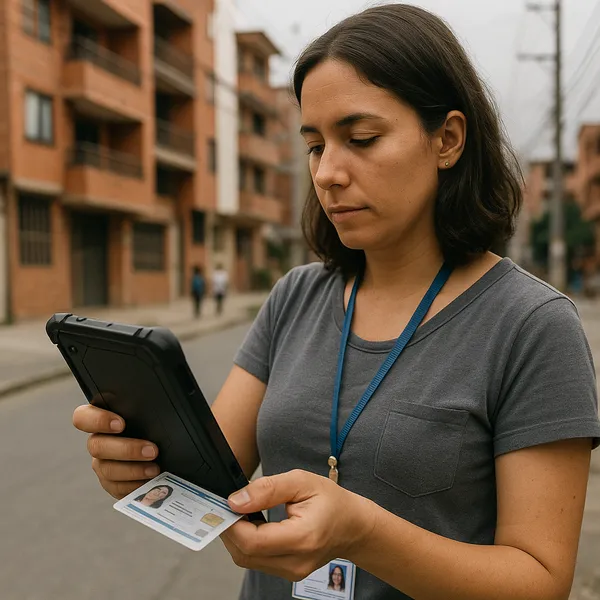Gender-Inclusive Enumeration - Mobilizing Diverse Survey Teams for Data Validity
Published on: Fri Mar 01 2024 by Ivar Strand
Introduction: The Premise of Credible Data
The foundation of any successful development or post-conflict intervention is credible data. Without an accurate understanding of a population’s needs, resources, and social dynamics, programmatic design is reduced to guesswork. However, a standard approach to data collection frequently contains a fundamental methodological flaw in many of the contexts where we operate.
The key challenge is that in many conservative or post-conflict societies, deeply ingrained cultural norms prevent male surveyors from interacting directly with female members of a household. This reality renders a significant portion—often half—of the population inaccessible. The result is a critical data lacuna, particularly on sensitive issues such as health, intra-household decision-making, and gender-based violence (GBV).
In this paper, we argue that the mobilization of female enumerators is not simply a ‘gender-sensitive’ add-on, but a methodological imperative for producing valid and representative data.
1. The Data Lacuna: When Half the Population is Silent
When survey teams are composed exclusively of men, they are often restricted to interviewing the male head of household. Information about the women and girls in that household is then collected by proxy. This creates two distinct analytical problems:
- Absence of Data: Direct perspectives from women on their health, security, economic activity, and needs are entirely missing. The data set is structurally incomplete.
- Poor Data Quality: Proxy data is notoriously unreliable. A husband’s perception of his wife’s needs is not a substitute for her own testimony. The veracity of such data is questionable, and it often reflects social desirability bias rather than ground truth.
An analytical framework built on this flawed foundation is incomplete at best and dangerously misleading at worst. It risks designing interventions that fail to address the needs of the entire community and may even exacerbate existing inequalities.
2. A Methodological Correction: The Principle of Matched-Pair Surveying
The solution is a straightforward methodological correction: matching the gender of the enumerator to the gender of the respondent. This approach ensures that all members of a community are reachable in a culturally appropriate manner.
Exhibit A: Contrasting Data Collection Models
We can visualize the difference between the standard and the corrected approach.
- Standard Model: A male enumerator interviews a male head of household, who provides proxy information on female household members. The result is incomplete and biased data, with a high margin of error for female-specific indicators.
- Matched-Pair Model: A male enumerator interviews male respondents, while a female enumerator on the same team interviews female respondents. The result is comprehensive, gender-disaggregated data with much higher validity.
This is not about doubling the effort; it is about making the initial effort count. A well-structured survey deploying matched-pair teams produces a dataset that is exponentially more valuable and reliable.
3. Operational and Social Co-Benefits
While the primary justification is improved data fidelity, the practice of hiring and deploying female surveyors yields significant secondary benefits.
- a. Enhanced Access on Sensitive Topics: Female enumerators can build a rapport with female respondents that is impossible for men to achieve in these contexts. This trust allows for the collection of more accurate data on sensitive topics like reproductive health, domestic violence, and control over economic resources.
- b. Increased Community Acceptance: Employing a gender-balanced team signals to the community that the organization is cognisant of and respects local norms. At Abyrint, we have found this demonstrably improves community buy-in and can enhance the security and access of the entire survey team.
- c. Local Economic Empowerment: The recruitment and training of local women as professional surveyors is, in itself, a positive economic intervention. It provides income, builds transferable skills, and elevates the status of women within their communities. This is a powerful, positive externality of a sound data collection methodology.
- d. More Effective Program Design: Ultimately, better data leads to better outcomes. With a clear, disaggregated picture of the needs of men and women, organizations can design programs that are more targeted, more efficient, and more likely to achieve their stated objectives.
4. Addressing the Practicalities
This approach is not without its challenges. However, these are logistical and programmatic hurdles, not insurmountable barriers.
- Recruitment and Training: In areas with low female literacy, finding a sufficient pool of candidates with the required skills can be difficult. This requires proactive recruitment strategies and may necessitate investment in foundational training on literacy and numeracy before survey-specific training can begin.
- Security and Logistics: Female staff may face unique security risks or have cultural restrictions on travel and accommodation. Security protocols and logistical plans must be designed to specifically mitigate these challenges, often including requirements for same-sex transport and lodging.
- Community Engagement: Deployment cannot happen without prior consent. Our approach involves extensive pre-deployment engagement with community elders and other gatekeepers to explain the methodology and secure their support for female surveyors to work in the community.
These challenges are not insignificant, but they are surmountable with careful planning and a commitment to operational excellence.
5. A Methodological Imperative
The exclusion of women’s voices from data collection is a critical failure that undermines the integrity of research and the effectiveness of aid. Mobilizing female surveyors is the most direct and effective way to correct this flaw.
This practice should not be seen as a niche component of “gender programming.” It is a core requirement for any organization committed to evidence-based decision-making in complex environments. Collecting accurate data is the first step toward delivering meaningful results, and in many parts of the world, that is impossible without women surveying women.



